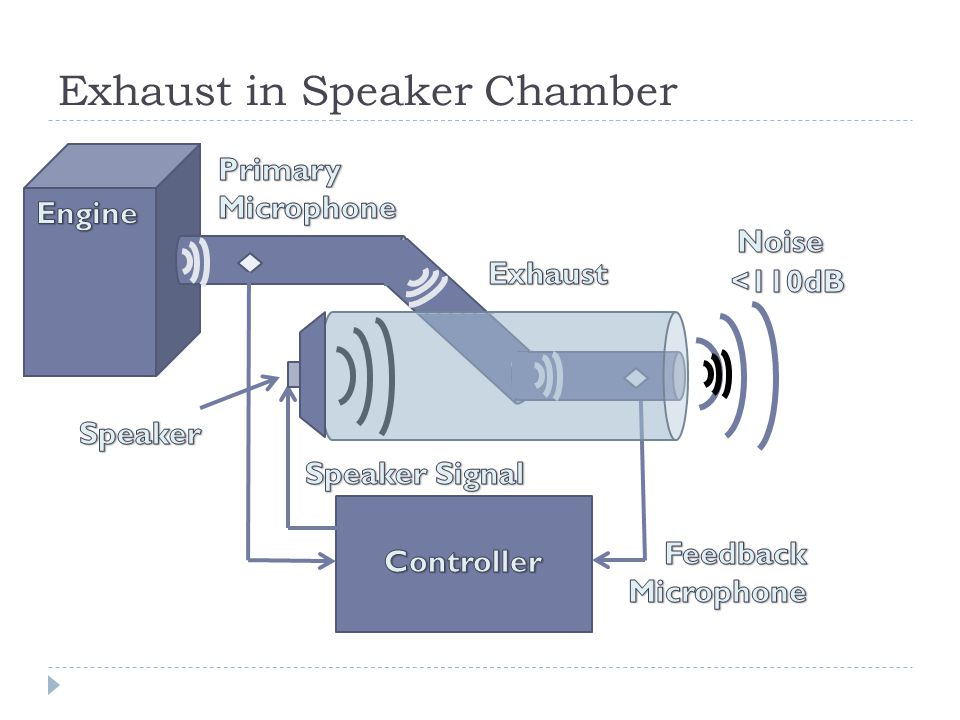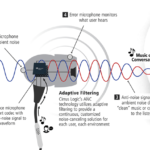Electrical noise, whether due to internal circuit external signal sources, is an ever-present factor which ripples through many aspects of the engineer’s design challenge. But there is another kind of noise – namely audio/ acoustic noise – which affects consumers and the individuals, and whose affect engineers are striving to reduce. This noise can affect those using a headset or earbuds (call them “earpieces”, or it can also affect “open areas” such as the cabin of a car or airplane. To counter this noise, an approach Active Noise Cancellation (ANC) has been devised and greatly enhanced. Note that the term “cancellation”” is somewhat optimistic as the noise is never canceled completely, but it is reduced significantly. Therefore, some prefer the term Active Noise Reduction (ANR), but the ANC designation seems to get greater use, perhaps to marketing pressures.
Q: What is the objective of an ANC system?
A: The goal is to have some sort of embedded system adjunct which adds minimally to cost, weight, and power consumption, yet counteracts any undesired ambient acoustic noise which affects the ability to hear desired sounds coming to the ear, or simply annoys the user. Note that this is not the same as reducing the noise at the source, which is often impractical or impossible. Instead, the intention is to reduce the noise as perceived by the listener This counteraction can come directly via earpiece, or as part of the general ambiance of a situation (room, cabin)
Q: What situations need ANC?
A: Many do. Anyone using a smartphone in a noisy area, sitting in an airplane with its constant background noise-drone sound, people trying to do a conference call using a desktop speakerphone, a car which has engine and road noise (although has been great progress in this last area due to improved mechanical design and soundproofing, but that has reached its limit).
Q: Before we go “active”, isn’t there a passive solution? In general, passive approaches are simpler, more reliable, and less costly.
A: There are passive approaches, but they simply don’t work well enough. The best-known passive approach is for microphones (mike)in some applications, where the mike has holes in the front for the person’s voice, plus holes in the back. The idea is that the further-away outside noise (wind, traffic) reaches the front and back of the mike’s sound element which transforms the impinging sound energy into electrical signals. This passive system is inexpensive, of course, but works poorly for many reasons, such as: the front and back receiving different noises and intensities (wind, for example, can whip very differently around the mike body’s front and back.
Another passive approach is to use headphones which seal tightly against the user’s head, and this provides some relief. In fact, good passive design is needed in most ANC designs to eliminate as much noise “up-front” as possible, before the ANC adds additional noise cancellation, In other words, don’t expect an ANC to fully overcome a poor seal around the headphones or earbuds.
Q: Then what is an active system?
A: The active-system solution is obvious, at least in principle: use a microphone to “capture” the outside noise (whether from people speaking nearby, or the more-general noise in a car or airplane’s cabin), then invert this noise signal (call it antinoise) and add it to the overall audio signal, Figure 1. Then, in theory, the original noise and this antinoise will cancel out. If the desired signal is going to a headset or earbud, the antinoise be simply added electronically (it takes just one op amp) to the incoming signal; if the offending noise is part of the surroundings where people are not wearing earpieces (passengers on an airplane, for example), then use the antinoise to drive loudspeakers. Again, in principle, this can be done with all-analog circuitry, and in fact early attempts at noise cancellation used that approach, beginning in the 1930s.

Q: But what’s the reality?
A: Before getting into real-world implementation details, consider a few points:
—the sound-collecting microphone and the sound-reproducing headphone/earbud or loudspeakers (transducers) are not in the same location, so what the microphone picks up is not exactly what the transducers need to generate their antinoise Even a slight positional difference between the two can make a big difference;
—if the ANC system has a signal delay of more than even a few milliseconds, it will be trying to cancel “previous” rather than immediate, current noise, and so may actually make things worse, as it is trying to correct the past. (It’s like speaking when you can only hear your voice a few milliseconds later — a popular lab experiment — even a 15-20 msec delay is not only unnerving but makes it almost impossible to talk properly.)
—if the ANC system feeding a headset or earbud, the path of the cornered signal is fairly direct, known, and relatively fixed, as it goes from the electronics right into the earpiece. But if the ANC system must use loudspeakers to create the anti-noise, you have issues of balancing noise/antinoise volume, speaker location and paths that the antinoise energy, it is a less-direct environment and needs amplifiers and speakers with their cost, wright, and size, but it still can be done, Figure 2. Further, any movement in the area, such as due to people or equipment, means the sound environment is not constant, so the antinoise creation process is much more complicated. For this reason, area ANC is a much tougher proposition than earpiece ANC.

Q: Does all this mean that ANC systems don’t work well and that they are really mostly marketing hype?
A: Perhaps that was the case a few years ago, but with today’s high-speed processing and improved algorithms, an ANC can be quite good, especially if it is a direct-to-ear design. Noise reduction of 30 – 40 dB and more is possible, depending on the offending noise frequency (usually about 200 Hz to several kHz) and type.
Part 2 of the FAQ will look at the ways in which a high-performance ANC can be implemented and how it deals with the real-world issues.
References
“Noise Control for Internal Combustion Engine Exhaust”
The David Clark Company, “How Does Hybrid Electronic Noise Cancellation Work?”
Sony Corp, “The Science Of Sony’s Digital Noise Canceling”
Cirrus Logic, “Low Power Smart Codec with Active Noise Cancellation and Echo Cancellation”

